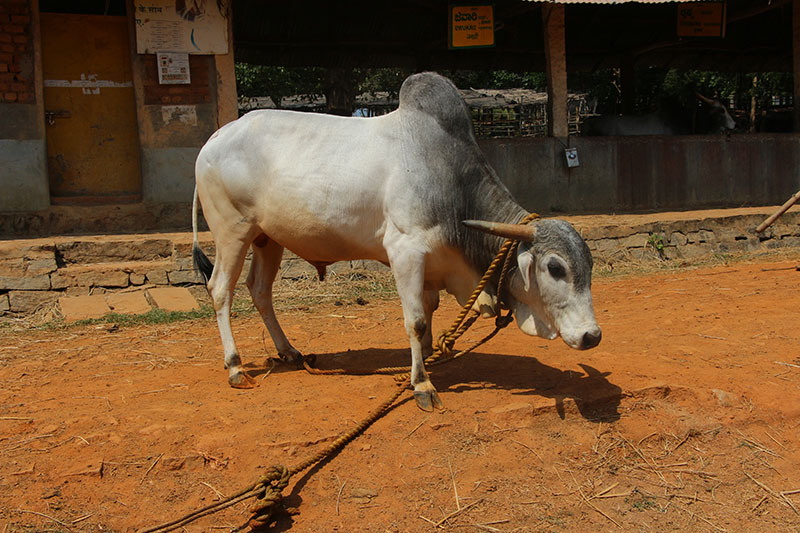Gaolao Cattle
The Gaolao cattle fit into the group of shorthorned, white or light-gray in color, with a long coffin-shaped skull, orbital arches not
prominent and with a face slightly convex in profile. It is also observed that the
native home of the breed is located along the route taken by the Rig Vedic Aryans
from the Northern passes through Central India to the South. There is a close similarity
between the Ongole and the Gaolao except the latter are much lighter, with greater
agility.
white or light-gray in color, with a long coffin-shaped skull, orbital arches not
prominent and with a face slightly convex in profile. It is also observed that the
native home of the breed is located along the route taken by the Rig Vedic Aryans
from the Northern passes through Central India to the South. There is a close similarity
between the Ongole and the Gaolao except the latter are much lighter, with greater
agility.
It is said that the Marathas developed this breed into a fast-trotting type suitable for quick army transport in the hilly areas of Gondwana, Madhya Pradesh. It was used mainly for military purposes by the Maratha army when invading the local Gond Kingdom. Old historical records show that the breed had fair milk-producing capacity, but during the last two centuries selection has been directed mainly towards developing a capacity for quick draft. The breed is found principally in the districts of Wardha, Nagpur and Chindwara.
Characteristics
Gaolao animals are of medium height, or rather light build and tend to be narrow and long. The head is markedly long and narrow with a straight profile usually tapering towards the muzzle and somewhat broader at the base of the horns. The forehead is usually flat, though it appears to recede at the top, giving a slightly convex appearance. The eyes are almond-shaped and placed slightly at angles. The ears are of medium size and are carried high. The horns are short and stumpy, blunt at the points and commonly slope slightly backwards.
The neck is short, with a moderately well-developed hump, which is usually loose and hangs on one side. The hind quarters are slightly drooping. Limbs are straight and muscular. Hooves are of medium size, hard and durable, and suited to hard road and hillside work. The dewlap is large but the sheath is only moderately developed. The skin is thin but loose. The tail is comparatively short, reaching only a little below the hocks. Females are usually white and males gray over the neck, hump and quarters.
References
Joshi, N.R., Phillips, R.W. (1953) Zebu Cattle of India and Pakistan, FAO Agriculture Studies No. 19, Publ. by FAO, Rome, 256 pp.
